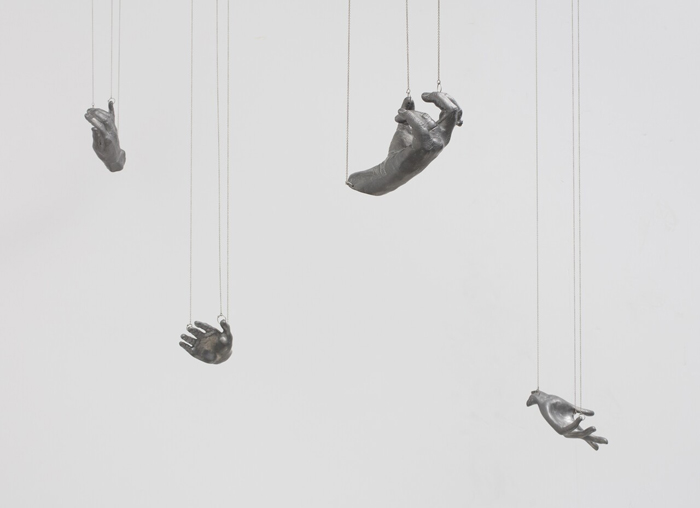Press Release
“You can’t leave out the body if you are thinking about sculpture. You can’t leave out figuration. It’s a big part of it. I was in Arnhem because I was going to be in Sonsbeek 93. At the Gemeentemuseum, now Museum Arnhem, I saw two sculptures alone in a small outdoor space. They were set about twelve or so feet apart from each other, and I think three of the four hands belonging to these two figures were missing. Hands are a classical thing to draw or to sculpt for the expression possible through gesture or attitude. I decided to work with hands. As the next thing I needed to do to fill out my approach to sculpture, it made sense to me. But to people looking at my work, it was confusing. ‘What is she doing? We thought of her as a post-

Liz Larner, Below above
Kunsthalle Zürich (Switzerland)
11.06 - 18.09.2022

The hands in Hands came from three different sources. I cast some from life. I sculpted some hands, and they were half size. And I found two or three novelty hands: one I picked up in a junk shop and another, I remember, in a Halloween store. I made molds of them all and took them to a foundry in LA that mostly casts trophies. They did what’s called slush casting, which means that it remains hollow, in this case more like gloves. All in all, there are ten different gestures, but depending how they are positioned, they create even more gestures, something that is interpretable. Hands is about gesture, letting the attitude, the body be the source of meaning. (...)
And then, in the most recent piece, the new big installation at Kunsthalle Zürich, the Meerschaum Drifts and the Asteroids, it really is all about material as the message and about making an impossible seascape that could not exist. An asteroid could never unite with the sea, with the Meerschaum, as, by entering the atmosphere, it becomes a meteorite. Making an impossible but known space with sculpture is my intention for the 2nd floor. Let’s see if it is going to work. It is a vista transforming into objects and materials and what they mean, not just as art materials but clay (for the asteroids) as part of the earth yet representing outer space; and plastic, which comes from fossil fuels but is turned into everyday objects made of unrecyclable and recyclable plastics, like toys, plastic wrapping, bags, and disposable containers, taking the form of sea foam. It’s a seascape or landscape or skyscape and an intense physical and possibly emotional experience through the material present; it is again about sculpture and the movement necessary to receive this art form; it is a space where narrative is possible. It can be seen as political or activist. It is about a disaster we potentially can control, but seem not to have the will or consensus needed to control, and another disaster we can’t control.” —Liz Larner
Californian artist Liz Larner creates new meaning in sculpture. Her focus is on the body, on presence and absence, and ways of thinking over time. Larner’s extensive exhibition below above at Kunsthalle Zürich reveals the diversity of her practice through a concentrated selection of works created between 1988 and 2022. The text above is taken from a conversation between Kunsthalle Zürich Director Daniel Baumann and Larner that features, alongside a short story by artist Tim Powers, in the pocket-
Curated by Jana Franze-
Exhibition 11 June -

© ArtCatalyse International / Marika Prévosto 2022. All Rights Reserved
Liz Larner, Hands, 1994. © Liz Larner. Courtesy of Regen Projects, Los Angeles.
